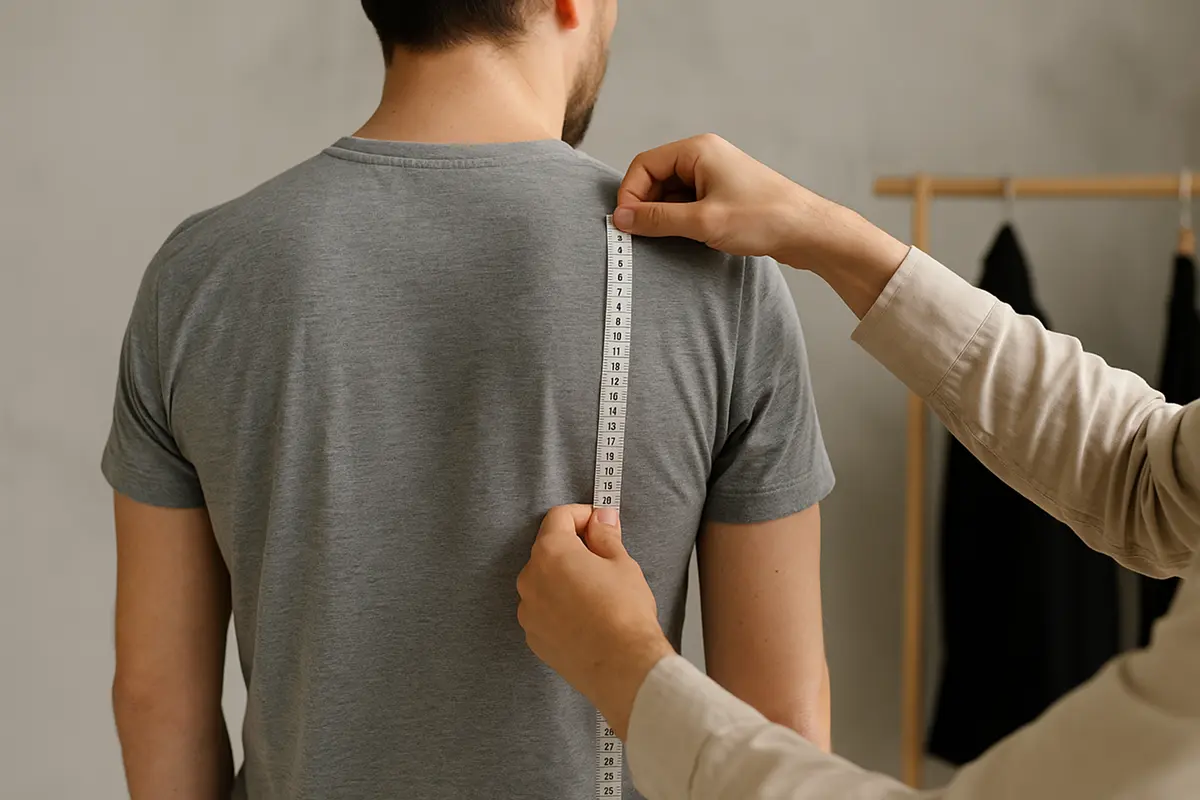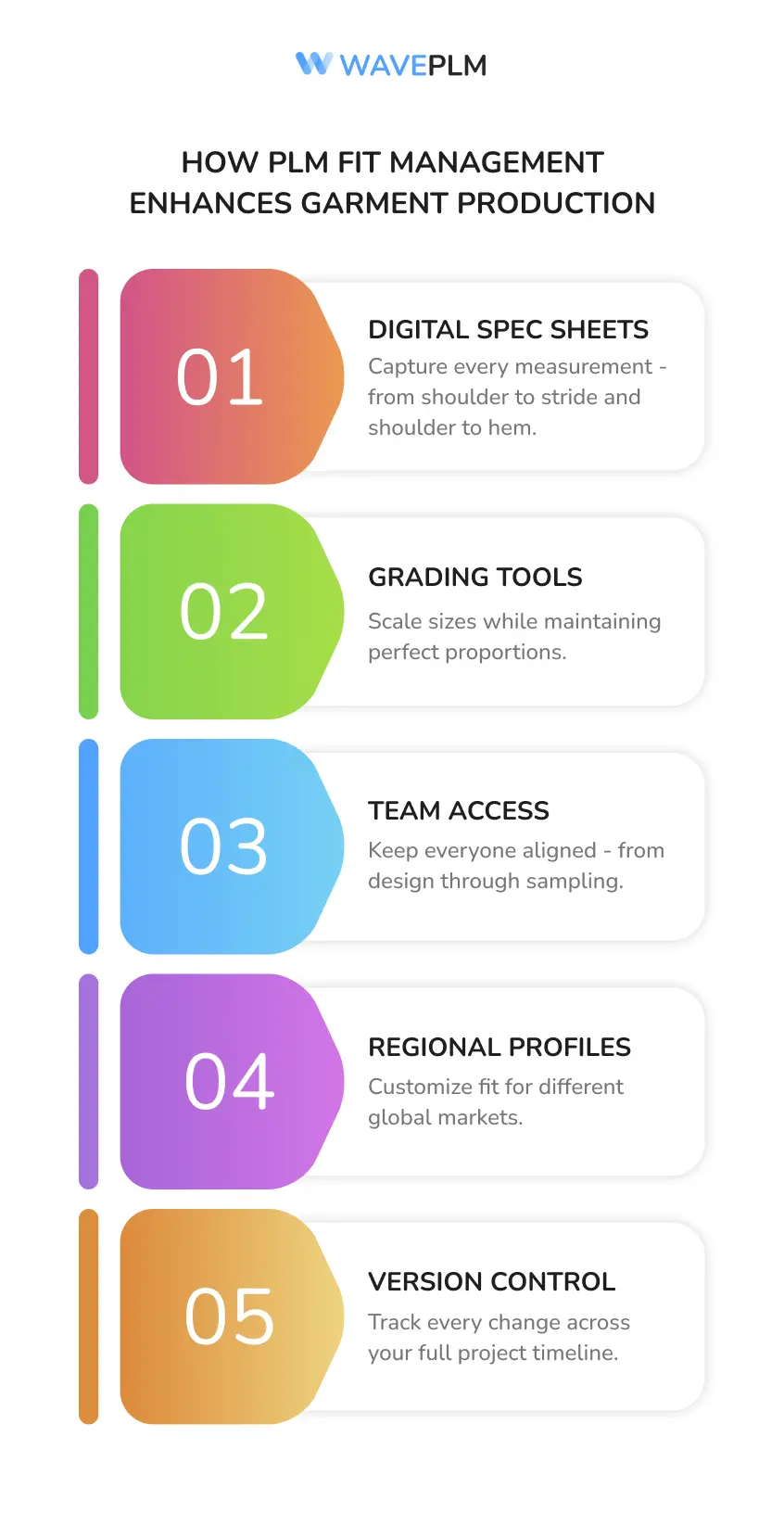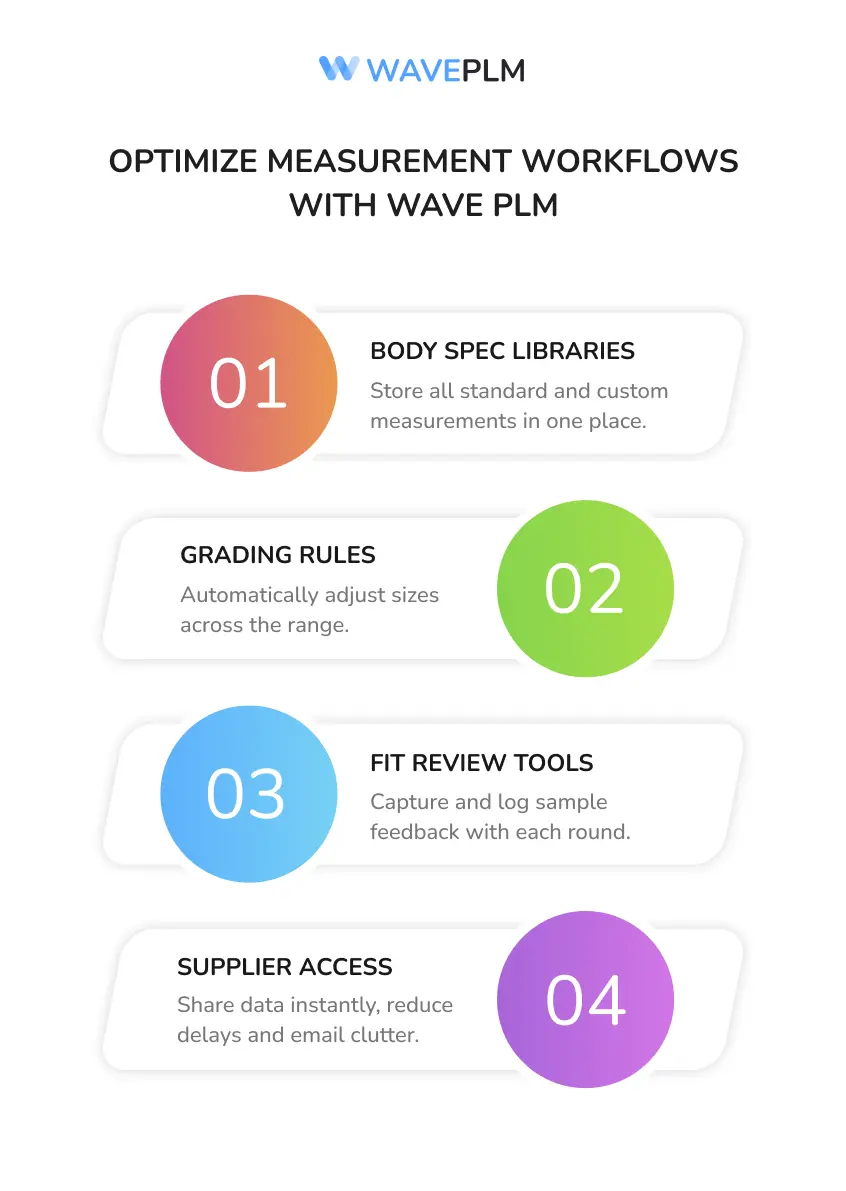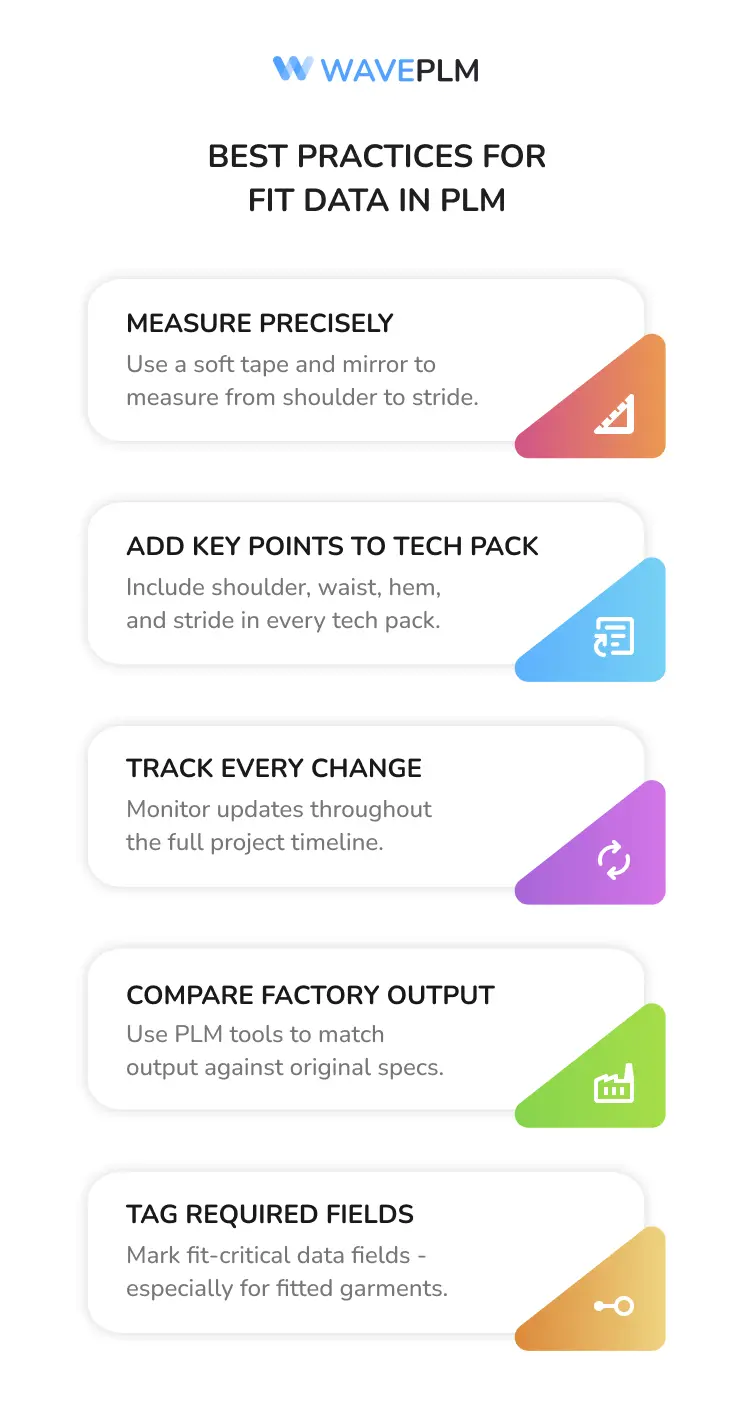
Getting garment fit right is more than just measuring the bust, waist, or hips. For bodysuits, jumpsuits, and dresses, the shoulder to stride measurement plays a key role in comfort and silhouette. This specific measurement captures the body’s vertical loop—from one shoulder, through the crotch, and back to the opposite shoulder.
In this article, you’ll learn how to integrate this essential measurement into PLM software like Wave PLM, and why it makes a difference in every stage of the product lifecycle. It’s all about using accurate body measurements to reduce errors, improve customer satisfaction, and make scaling production smoother.
What Is the Shoulder to Stride Measurement?
The shoulder to stride measurement traces a loop from shoulder to crotch and back to the other shoulder. It helps determine toThe shoulder to stride measurement follows the natural curve of the body. It starts at the top of one shoulder, moves down the front of the torso, through the crotch, and ends at the opposite shoulder.
This measurement is especially important when creating or fitting:
- Jumpsuits
- Bodysuits
- One-piece swimwear
- Overalls
- Dresses with fitted tops and full-length hems
It helps you get the vertical fit right, so clothes feel better and move with the body.
Why It Matters for Fit Accuracy
Many brands overlook this measure, yet it prevents major issues. Without it, garments may:
- Pull at the waist
- Hang too low at the hem
- Cause discomfort across the stride
Using this measurement with other data—like chest, shoulder to hem, or waist to stride—helps determine the best cut and size for your design.
Where PLM Software Comes In
With PLM software, brands can track and manage garment measurements at every stage. Instead of emailing files or spreadsheets, everything lives in a central system.
Benefits of PLM Fit Management:
|
Fit Improvement |
|
|---|---|
|
Digital spec sheets |
Add fields for shoulder to stride and shoulder to hem |
|
Grading tools |
Adjust sizes without losing proportion |
|
Team access |
Keep everyone updated, from design to sampling |
|
Regional profiles |
Tailor fit across markets |
|
Version control |
Trace changes over your full project timeline |

Adding Shoulder to Stride to Tech Packs
Including shoulder to stride in your garment specs is simple. Here’s how it should appear in your Wave PLM tech pack:
|
Measurement |
Description |
Value |
Unit |
Tolerance |
|
Shoulder to Stride |
Loop from shoulder through crotch to opposite shoulder |
148 |
cm |
±3 cm |
|
Shoulder to Hem |
Top of shoulder to bottom hem |
132 |
cm |
±2 cm |
|
Chest |
Around fullest chest point |
92 |
cm |
±2 cm |
|
Waist |
Narrowest torso point |
74 |
cm |
±2 cm |
Regional Fit Variations
Consumers in different regions prefer different fits. PLM tools help you manage multiple size profiles. Here’s a quick sample:
|
Region |
Preferred Shoulder to Stride |
Notes |
|
USA |
145-150 cm |
Looser, casual fit |
|
EU |
140-145 cm |
Balanced and structured |
|
Asia |
135-140 cm |
Slim and compact |
Managing Measurement Data with Wave PLM
Wave PLM supports project planning with accurate fit tools. Here’s what it includes:
|
Feature |
What It Solves |
|
Body Spec Libraries |
Keep standard and custom measurements in one place |
|
Grading Rules |
Auto-adjust per size range |
|
Fit Review Tools |
Log sample feedback per round |
|
Supplier Access |
Send data instantly, reduce email delays |

How It Works Across the Supply Chain
Without PLM:
- Manual entries cause errors
- Fit notes lost in emails
- Repeats in sampling rounds
With PLM:
- Accurate and shared measurements
- Shorter feedback loops
- Better fit on first production run
Best Practices for Fit Data in PLM
- Always measure shoulder to stride using a soft tape and mirror
- Add shoulder, waist, hem, and stride points to every tech pack
- Track updates across the project
- Use tools to compare factory output with original measurements
- Tag this field as required for fitted garments

Sample Template: Body Measurement Chart
|
Measurement |
How to Measure |
Required for |
|
Shoulder to Stride |
Over shoulder, through crotch, to other shoulder |
Jumpsuits, Bodysuits |
|
Shoulder to Hem |
From shoulder top to bottom edge |
Dresses, Tops |
|
Chest |
Around the widest part of the chest |
All tops and bodysuits |
|
Waist |
Around the smallest torso point |
Dresses, Jumpsuits |
|
Stride |
Crotch to foot (vertical) |
Pants, Bottoms |
Common Fit Issues from Missing Data
|
Problem |
Cause |
Solution |
|
Bunched hem or crotch |
Shoulder to stride too short |
Recheck measurements |
|
Droopy upper fit |
Shoulder too wide or misaligned |
Adjust shoulder points |
|
Tight waist fit |
Incorrect torso balance |
Include vertical measure data |
Final Thoughts
Fit matters. And when you’re creating clothing that wraps the whole body—like jumpsuits and bodysuits—ignoring the shoulder to stride measurement leads to poor results.
PLM software, like Wave PLM, gives you the tools to capture and manage those essential measurements across your product journey. Make shoulder, hem, waist, and stride part of every fit discussion, and you’ll deliver garments that feel as good as they look.
Need help setting it up? Get in touch with Wave PLM, and we’ll walk you through fit tracking and integration tailored to your next project.





Leave a Reply